- Tips for Growing Rosemary
- Choosing the Right Rosemary Variety
- 1. Common Rosemary (Rosmarinus officinalis)
- 2. Prostrate Rosemary (Rosmarinus officinalis ‘Prostratus’)
- 3. Tuscan Blue Rosemary (Rosmarinus officinalis ‘Tuscan Blue’)
- 4. Golden Rain Rosemary (Rosmarinus officinalis ‘Golden Rain’)
- 5. Spice Islands Rosemary (Rosmarinus officinalis ‘Spice Islands’)
- Providing the Ideal Growing Conditions
- Sunlight
- Soil
- Watering
- Fertilizer
- Temperature and Humidity
- Spacing
- Companion Planting
- Planting Rosemary in Your Vegetable Garden
- Caring for Rosemary Plants
- 1. Sunlight:
- 2. Soil:
- 3. Watering:
- 4. Fertilizer:
- 5. Pruning:
- 6. Pest and Disease Control:
- 7. Harvesting:
- Pruning and Harvesting Rosemary
- Pruning Rosemary
- Harvesting Rosemary
- Common Pests and Diseases
- Pests:
- Diseases:
- Using Rosemary in the Kitchen
- 1. Cooking with Rosemary
- 2. Baking with Rosemary
- 3. Seasoning with Rosemary
- Indoor Rosemary Care at Home
- Choosing the right container
- Providing the ideal growing conditions
- Watering and humidity
- Fertilizing
- Pruning and harvesting
- Pest control
- “Question-Answer”
- What are some tips for growing rosemary?
- What are the different varieties of rosemary available?
- Can rosemary be grown in a vegetable garden?
- How often should rosemary be watered?
- How do you prune rosemary?
- Can rosemary be grown indoors?
- “Video” The Complete Guide to Pruning & Propagating Rosemary
Rosemary is a versatile and aromatic herb that is commonly used in cooking and home remedies. It adds a distinct flavor to dishes and has numerous health benefits. Growing rosemary in your vegetable garden or at home is relatively easy, and it can thrive in a variety of climates.
There are several different varieties of rosemary to choose from, each with its own unique characteristics. The most common variety is Rosmarinus officinalis, which has thin, needle-like leaves and a strong flavor. Other popular varieties include the trailing rosemary, which is great for hanging baskets, and the Tuscan blue rosemary, which has larger leaves and a milder flavor.
To grow rosemary, you’ll need a sunny location with well-draining soil. It’s best to plant rosemary in the spring, once the danger of frost has passed. You can either start with seeds or purchase young plants from a nursery. When planting, dig a hole that is slightly larger than the root ball and place the plant in the hole, making sure that the soil level is even with the top of the root ball.
After planting, it’s important to water your rosemary regularly, especially during dry periods. However, be cautious not to overwater, as rosemary prefers drier soil. Mulching around the base of the plant can help retain moisture and control weeds. Pruning your rosemary regularly will encourage a bushier and more compact growth habit.
If you don’t have space in your garden, you can also grow rosemary in containers. Choose a pot with drainage holes and fill it with well-draining potting mix. Place the pot in a sunny location and water the plant when the top inch of soil feels dry. Remember to fertilize your potted rosemary every few weeks during the growing season.
Rosemary is a great addition to any vegetable garden or home herb collection. Its aromatic leaves not only add flavor to dishes but can also be used in homemade teas, infused oils, and natural cleaning products. With the right care and attention, you can enjoy a bountiful harvest of rosemary all season long.
Tips for Growing Rosemary
- Choose a sunny location: Rosemary thrives in full sun, so it’s important to choose a spot in your garden that receives at least 6-8 hours of direct sunlight each day.
- Provide well-drained soil: Rosemary prefers well-drained soil with a pH level between 6 and 7. If your soil tends to retain water, consider planting your rosemary in raised beds or containers with good drainage.
- Water sparingly: Rosemary is drought-tolerant and prefers to be watered sparingly. Allow the soil to dry out slightly between waterings, and be careful not to overwater as this can lead to root rot.
- Prune regularly: Regular pruning will help promote bushier growth and prevent your rosemary plant from becoming leggy. Trim off the top one-third of the plant every spring to encourage new growth.
- Protect from frost: Rosemary is a Mediterranean herb and is not frost-tolerant. If you live in a region with cold winters, consider growing your rosemary in containers so you can bring it indoors during the winter months.
- Fertilize sparingly: Rosemary doesn’t require a lot of fertilizer, but you can apply a slow-release, balanced fertilizer in the spring to promote healthy growth.
- Harvest regularly: You can harvest rosemary leaves anytime once the plant reaches a height of about 6 inches. Simply snip off the desired amount of leaves, taking care not to remove more than one-third of the plant at a time.
- Use mulch: Applying a layer of organic mulch around your rosemary plants will help conserve moisture, suppress weeds, and regulate soil temperature.
- Companion plant: Rosemary can be planted alongside vegetables such as cabbage, carrots, and beans to help repel pests like aphids and cabbage worms.
- Consider propagation: If you want to expand your rosemary collection, you can propagate the plant by taking stem cuttings in late spring or early summer. Dip the cut end in rooting hormone and plant it in well-draining soil or a container filled with a mix of perlite and peat moss.
Choosing the Right Rosemary Variety
Rosemary is a versatile herb that comes in a variety of different varieties. When choosing the right rosemary variety for your vegetable garden or home, consider factors such as flavor, growth habit, and intended use.
1. Common Rosemary (Rosmarinus officinalis)
The most commonly grown variety, common rosemary is known for its strong flavor and aroma. It has upright growth habit and can grow up to 3 feet tall. Common rosemary is perfect for culinary use and can be used in a variety of dishes such as roasted vegetables, grilled meats, and soups.
2. Prostrate Rosemary (Rosmarinus officinalis ‘Prostratus’)
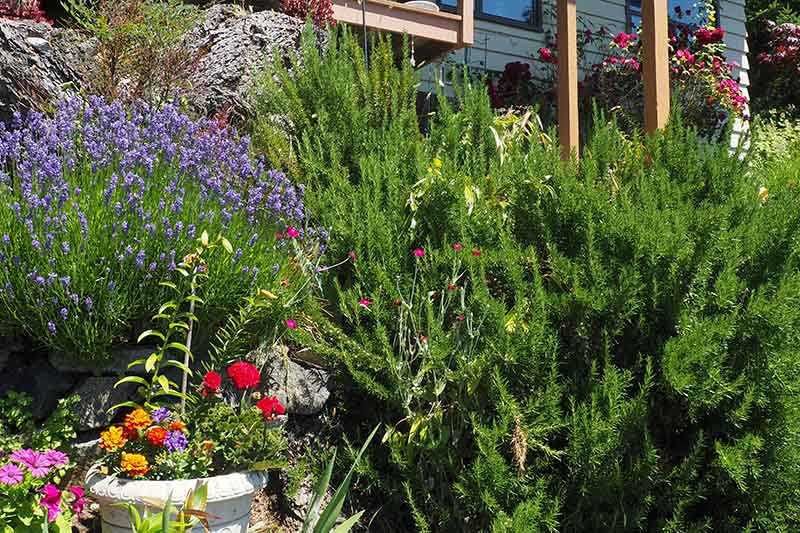
Prostrate rosemary has a trailing growth habit, making it ideal for ground cover and hanging baskets. It has a milder flavor compared to common rosemary, but still adds a nice herbal note to dishes. Prostrate rosemary can also be used as a decorative plant in your garden.
3. Tuscan Blue Rosemary (Rosmarinus officinalis ‘Tuscan Blue’)
Tuscan blue rosemary is a larger variety that can grow up to 6 feet tall. It has a more robust flavor compared to common rosemary and is often used in Italian and Mediterranean cuisine. Tuscan blue rosemary is also a great choice for adding height and structure to your garden.
4. Golden Rain Rosemary (Rosmarinus officinalis ‘Golden Rain’)
Golden rain rosemary is a variegated variety with beautiful golden-yellow foliage. It has a milder flavor compared to common rosemary, but still adds a nice herbal note to dishes. Golden rain rosemary is perfect for adding color and visual interest to your garden.
5. Spice Islands Rosemary (Rosmarinus officinalis ‘Spice Islands’)
Spice islands rosemary is a compact variety that grows up to 2 feet tall. It has a slightly milder flavor compared to common rosemary, making it perfect for those who prefer a less intense herb taste. Spice islands rosemary is great for container gardening or growing in small spaces.
| Variety | Flavor | Growth Habit | Recommended Use |
|---|---|---|---|
| Common Rosemary | Strong | Upright | Culinary |
| Prostrate Rosemary | Mild | Trailing | Ground cover, hanging baskets |
| Tuscan Blue Rosemary | Robust | Tall, upright | Culinary, garden structure |
| Golden Rain Rosemary | Mild | Variegated, upright | Decorative, visual interest |
| Spice Islands Rosemary | Mild | Compact | Container gardening, small spaces |
Consider these different rosemary varieties to find the one that best suits your needs and preferences. Whether you’re looking for a strong-flavored herb for cooking or a decorative plant for your garden, there’s a rosemary variety out there for you.
Providing the Ideal Growing Conditions
Rosemary is a versatile plant that can grow in various environments, but it thrives best in specific growing conditions. By providing the ideal conditions, you can ensure healthy growth and abundant harvests of this aromatic herb.
Sunlight
Rosemary loves sunlight and requires at least six hours of direct sunlight each day. Choose a sunny spot in your garden that receives ample sunlight throughout the day. If you are growing rosemary indoors, place it near a sunny window or use grow lights to provide sufficient light.
Soil
Rosemary prefers well-draining soil that is slightly acidic to neutral (pH level of 6.0 to 7.0). Avoid heavy clay soil that retains water, as it can lead to root rot. If your soil is heavy and compacted, amend it with organic matter such as compost or well-rotted manure to improve drainage.
Watering
Rosemary is a drought-tolerant plant and does not like wet feet. Avoid overwatering by allowing the top inch of soil to dry out before watering again. It’s better to underwater than to overwater rosemary. Water deeply and thoroughly when you do water, ensuring the water reaches the roots.
Fertilizer
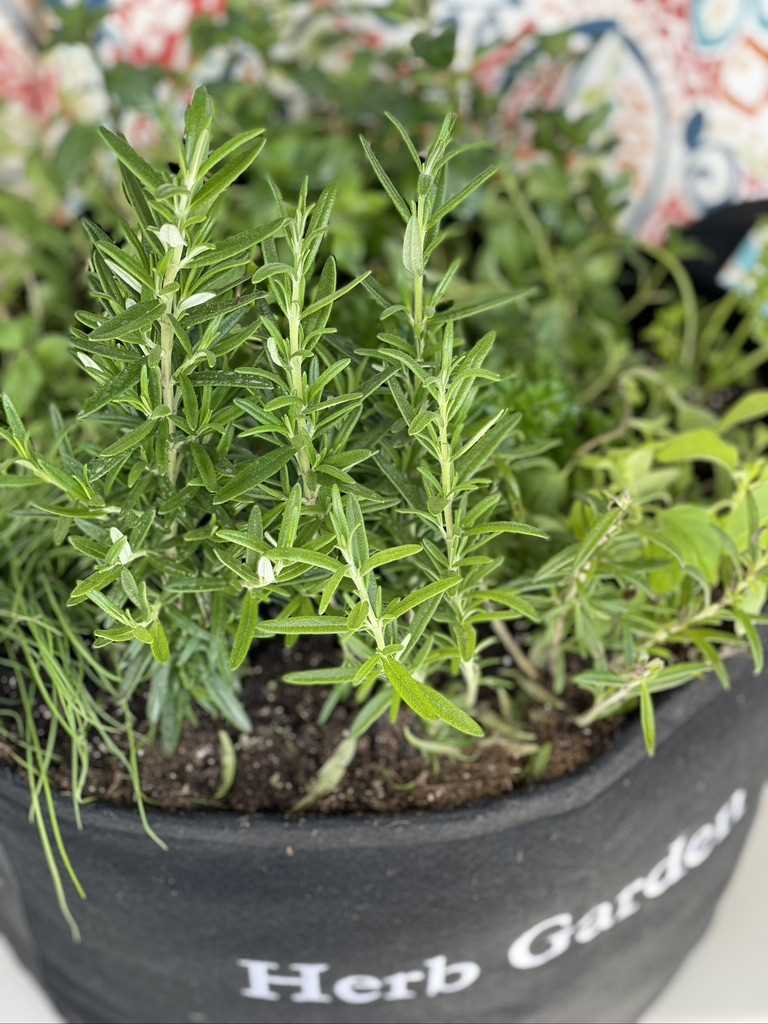
Rosemary is a relatively low-maintenance herb when it comes to fertilizing. Too much nitrogen can result in excessive foliage growth with diminished flavor. In general, a balanced fertilizer with equal amounts of nitrogen, phosphorus, and potassium is sufficient. Apply fertilizer sparingly, following the manufacturer’s recommendations.
Temperature and Humidity
Rosemary is a Mediterranean herb that thrives in warm and dry climates. It can withstand hot summers and mild winters. Rosemary prefers temperatures between 65-85°F (18-29°C). Avoid planting it in areas with high humidity, as this can lead to fungal diseases. If you live in a region with cold winters, consider growing rosemary in pots that you can bring indoors during the winter months.
Spacing
When planting rosemary, provide it with enough space to grow. Rosemary plants can reach a height and width of up to 3-4 feet (0.9-1.2 meters). Space your plants at least 2-3 feet apart to ensure adequate air circulation and prevent overcrowding.
Companion Planting
Rosemary is a beneficial companion plant in the garden, as it repels harmful insects while attracting beneficial ones like bees and butterflies. Consider planting rosemary alongside cabbage, beans, carrots, and sage to help deter pests.
By providing the ideal growing conditions for your rosemary plants, you can enjoy a bountiful supply of this flavorful herb throughout the year.
Planting Rosemary in Your Vegetable Garden
Adding rosemary to your vegetable garden can not only enhance the flavor of your dishes, but it can also provide various health benefits. Rosemary is an easy-to-grow herb that thrives in well-drained soil and full sun. Here are some tips to help you successfully plant rosemary in your vegetable garden:
- Choose a suitable location: Select a spot in your vegetable garden that receives at least 6 hours of direct sunlight per day. Rosemary prefers warm temperatures and does well in areas with a Mediterranean climate.
- Prepare the soil: Rosemary prefers well-drained soil with a pH level between 6 and 7. If your soil is heavy or clay-like, consider adding organic matter such as compost or sand to improve drainage.
- Planting method: You can start rosemary from seeds, but it’s easier to grow it from cuttings or transplants. Dig a hole that is slightly larger than the root ball of the plant and place the rosemary in the hole. Backfill with soil and gently firm it around the plant.
- Spacing: Space the rosemary plants at least 2 feet apart to allow for proper air circulation. This will help prevent diseases that can affect the plant.
- Watering: Rosemary is drought tolerant and prefers to dry out between waterings. Water the plants deeply, but infrequently, allowing the soil to dry out slightly between waterings. Overwatering can cause root rot and other problems.
- Mulching: Applying a layer of mulch around the base of the plants can help conserve moisture and suppress weed growth. Use organic mulch such as straw or wood chips, and avoid piling it up against the stems, as this can cause rot.
- Pruning: Regular pruning will help maintain the shape and size of the rosemary plants. Prune after flowering to encourage bushier growth. You can harvest the leaves as needed for culinary use.
- Companion planting: Rosemary can benefit other plants in your vegetable garden. It repels certain pests such as cabbage moths and carrot flies, so consider planting it near susceptible crops.
By following these tips, you can successfully grow rosemary in your vegetable garden and enjoy its aromatic scent and flavorful leaves throughout the year.
Caring for Rosemary Plants
Rosemary is a versatile and hardy herb that can be grown in your vegetable garden or at home. Proper care is essential to keep your rosemary plants healthy and productive. Here are some tips for caring for rosemary plants:
1. Sunlight:
Rosemary plants require at least 6-8 hours of direct sunlight every day. Place your plants in a sunny area or use grow lights if you don’t have enough natural light.
2. Soil:
Rosemary prefers well-draining soil with a pH level between 6 and 7. If your soil is heavy or clay-like, amend it with compost or sand to improve drainage.
3. Watering:
While rosemary plants are drought-tolerant, they still require regular watering. Water your plants when the top inch of soil feels dry. Avoid overwatering, as this can cause root rot.
4. Fertilizer:
Rosemary plants don’t require much fertilizer. You can add a balanced organic fertilizer once or twice a year in the spring and summer. Avoid using high-nitrogen fertilizers, as this can promote excessive leaf growth.
5. Pruning:
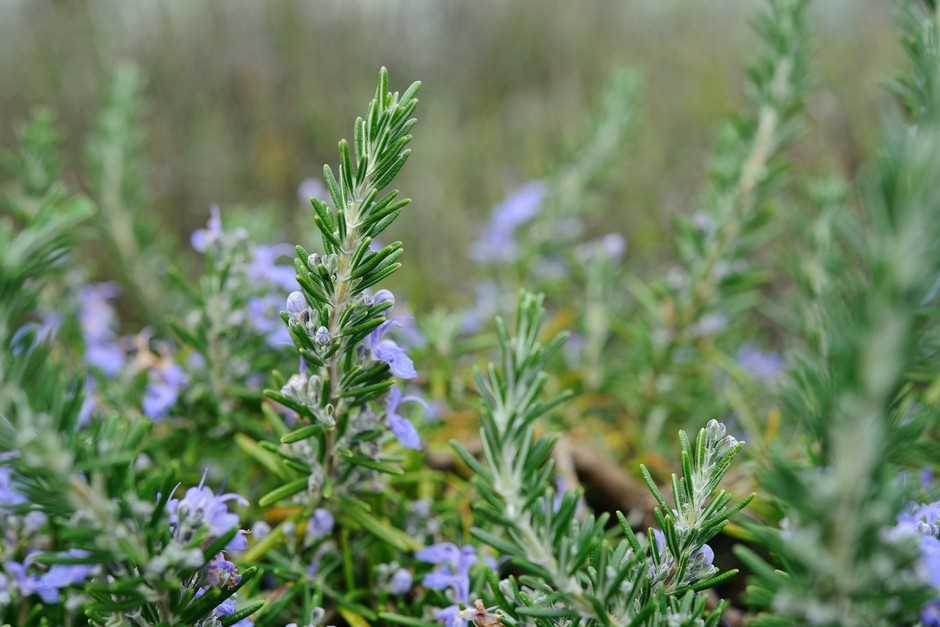
Regular pruning helps maintain the shape and health of your rosemary plants. Prune them after flowering or in early spring to remove dead or damaged branches. This will encourage new growth and prevent the plants from becoming woody.
6. Pest and Disease Control:
Rosemary plants are generally pest and disease resistant. However, they can occasionally be bothered by aphids, spider mites, or powdery mildew. Monitor your plants regularly and take appropriate measures, such as using organic insecticidal soap or neem oil, to control pests and diseases.
7. Harvesting:
You can start harvesting rosemary leaves once the plants are well-established, usually after the first year. Harvest by snipping off the top few inches of the branches. Regular harvesting promotes bushier growth and keeps the plants compact.
By following these care tips, you can enjoy fresh and flavorful rosemary from your garden all year round. Whether you use it in cooking, as a garnish, or for its aromatic properties, rosemary is a wonderful addition to any garden or kitchen.
Pruning and Harvesting Rosemary
Pruning and harvesting rosemary is an essential part of growing this aromatic herb. Regular pruning helps maintain the shape and health of the plant, while harvesting allows you to enjoy the fresh flavor of rosemary in your cooking.
Pruning Rosemary
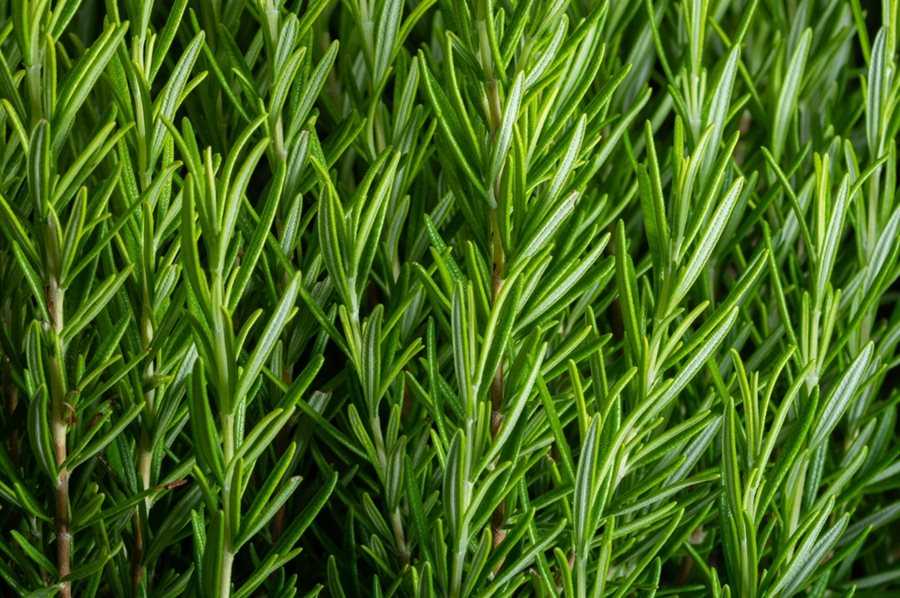
Pruning rosemary is best done in the early spring, just as new growth begins to emerge. It is important to prune rosemary regularly to prevent it from becoming too woody and to encourage bushier growth. Follow these steps to prune your rosemary plant:
- Using a pair of clean and sharp pruning shears, trim back any dead or damaged branches. This will help promote new growth and prevent disease.
- Identify any long, leggy branches and trim them back to a healthy growth node. This will encourage the plant to fill out and become bushier.
- Trim the top of the rosemary plant to maintain its desired shape. You can prune it into a rounded or square shape, or allow it to grow more naturally.
Remember not to prune more than one-third of the plant at a time, as this can shock the rosemary and hinder its growth.
Harvesting Rosemary
Harvesting rosemary can be done throughout the year, but the best time to harvest is in the morning, after the dew has dried but before the heat of the day. Follow these steps to harvest your rosemary:
- Identify the mature branches of the rosemary plant that have developed a woody texture and strong aroma.
- Using pruning shears or scissors, cut the branches just above a growth node or leaf junction.
- Keep in mind that it’s best to harvest rosemary in small quantities, as this will promote new growth and ensure a continuous supply of fresh herbs.
After harvesting, you can use the fresh rosemary immediately in your cooking, or dry it for later use. To dry rosemary, hang the cut branches upside down in a warm, well-ventilated area until completely dry. Once dry, remove the leaves from the stems and store them in an airtight container.
Common Pests and Diseases
Rosemary plants are generally resistant to pests and diseases. However, there are a few common issues that can affect them. Here are some of the most common pests and diseases that you may encounter when growing rosemary:
Pests:
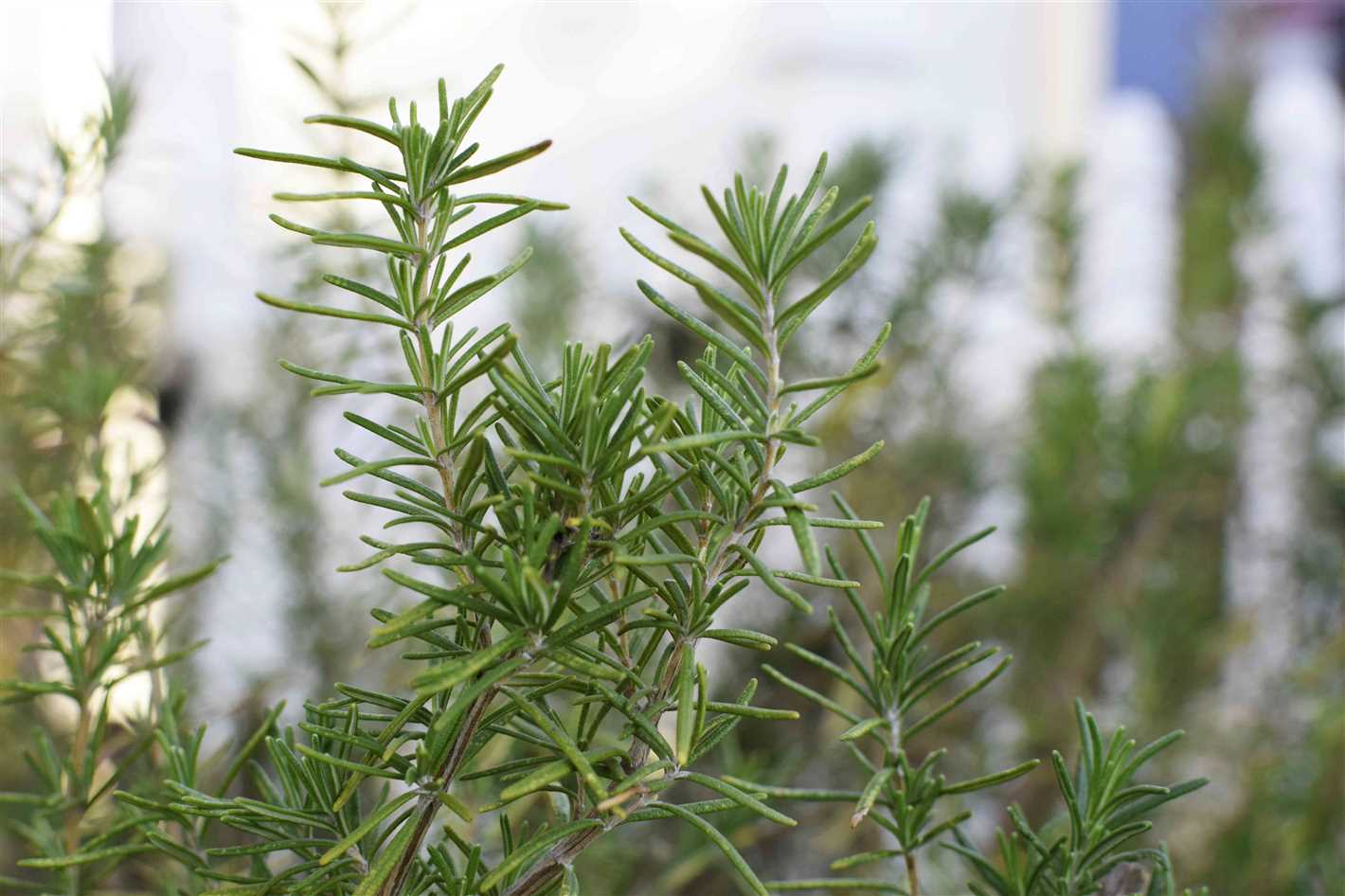
- Aphids: These small insects feed on the sap of the rosemary plant and can cause stunted growth and distorted leaves. They can be controlled by spraying the plant with a mixture of water and dish soap, or by introducing natural predators such as ladybugs.
- Spider Mites: These tiny mites can infest rosemary plants and cause yellowing leaves and webbing. Regularly misting the leaves with water can help prevent spider mite infestations. If infestation is severe, you can also use an insecticidal soap or neem oil.
- Whiteflies: These small, white flying insects feed on the sap of rosemary plants and can cause leaf yellowing and wilting. They can be controlled by using sticky traps or applying an insecticidal soap.
- Caterpillars: Certain caterpillar species, such as the rosemary leaf roller, can feed on rosemary leaves and cause significant damage. Hand-picking caterpillars off the plants or using biological controls like Bacillus thuringiensis can help manage infestations.
Diseases:
- Powdery Mildew: This fungal disease appears as a white powdery substance on the leaves of rosemary plants. It can be prevented by ensuring good air circulation around the plants and avoiding overhead watering. If necessary, apply a fungicide labeled for powdery mildew control.
- Root Rot: Overwatering or poorly-draining soil can lead to root rot in rosemary plants. To prevent this disease, allow the soil to dry out between waterings and make sure the pot or garden bed has adequate drainage.
- Leaf Spot: Leaf spot is a fungal disease that causes dark, water-soaked spots on the leaves of rosemary plants. Remove and destroy affected leaves and avoid overhead watering to prevent the spread of the disease.
By monitoring your rosemary plants regularly and taking prompt action when necessary, you can keep these pests and diseases under control and ensure healthy growth of your rosemary plants.
Using Rosemary in the Kitchen
Rosemary is a versatile herb that can add a unique flavor to a variety of dishes. Its strong aroma and pine-like taste make it a popular addition to many traditional Mediterranean recipes.
1. Cooking with Rosemary
Rosemary pairs well with a wide range of ingredients and can be used in both sweet and savory recipes. Here are some ways you can use rosemary in your cooking:
- Add a sprig of rosemary to roasted meats, such as lamb or chicken, to infuse them with a savory flavor.
- Chop fresh rosemary leaves and mix them with butter to create a flavorful herb butter. Use it to top steamed vegetables or spread it on warm bread.
- Make rosemary-infused oil by heating olive oil with a few sprigs of rosemary. Drizzle the infused oil over salads, pasta, or grilled vegetables.
- Include rosemary in marinades for meat, poultry, or tofu to enhance their flavors.
- Add a pinch of dried rosemary to tomato-based sauces, stews, or soups for added depth and complexity.
2. Baking with Rosemary
Rosemary can also be used in baking to add a unique twist to your sweet treats. Here are a few ideas:
- Add chopped rosemary leaves to your favorite cookie or cake recipes for a savory and aromatic twist.
- Infuse milk or cream with rosemary by heating it gently with a sprig of the herb. Use the infused liquid to make custards, ice creams, or creamy desserts.
3. Seasoning with Rosemary
Aside from using rosemary in specific recipes, you can also use it as a seasoning to enhance the overall flavor of your dishes. Here are some ways to do so:
- Grind dried rosemary into a fine powder and use it to season meat, poultry, or roasted vegetables.
- Combine dried rosemary with other herbs, such as thyme and oregano, to create a homemade herb blend for seasoning various dishes.
Remember, rosemary is an herb with a strong flavor, so a little goes a long way. Start with a small amount and adjust to your taste preferences.
By incorporating rosemary into your culinary creations, you can bring a touch of the Mediterranean to your kitchen and enjoy its wonderful flavor and aroma.
Indoor Rosemary Care at Home
While rosemary is well-known for being a hardy and versatile herb to grow outdoors, it can also thrive as an indoor plant. With proper care and attention, you can enjoy the fresh aroma and vibrant green foliage of rosemary in your home all year round.
Choosing the right container
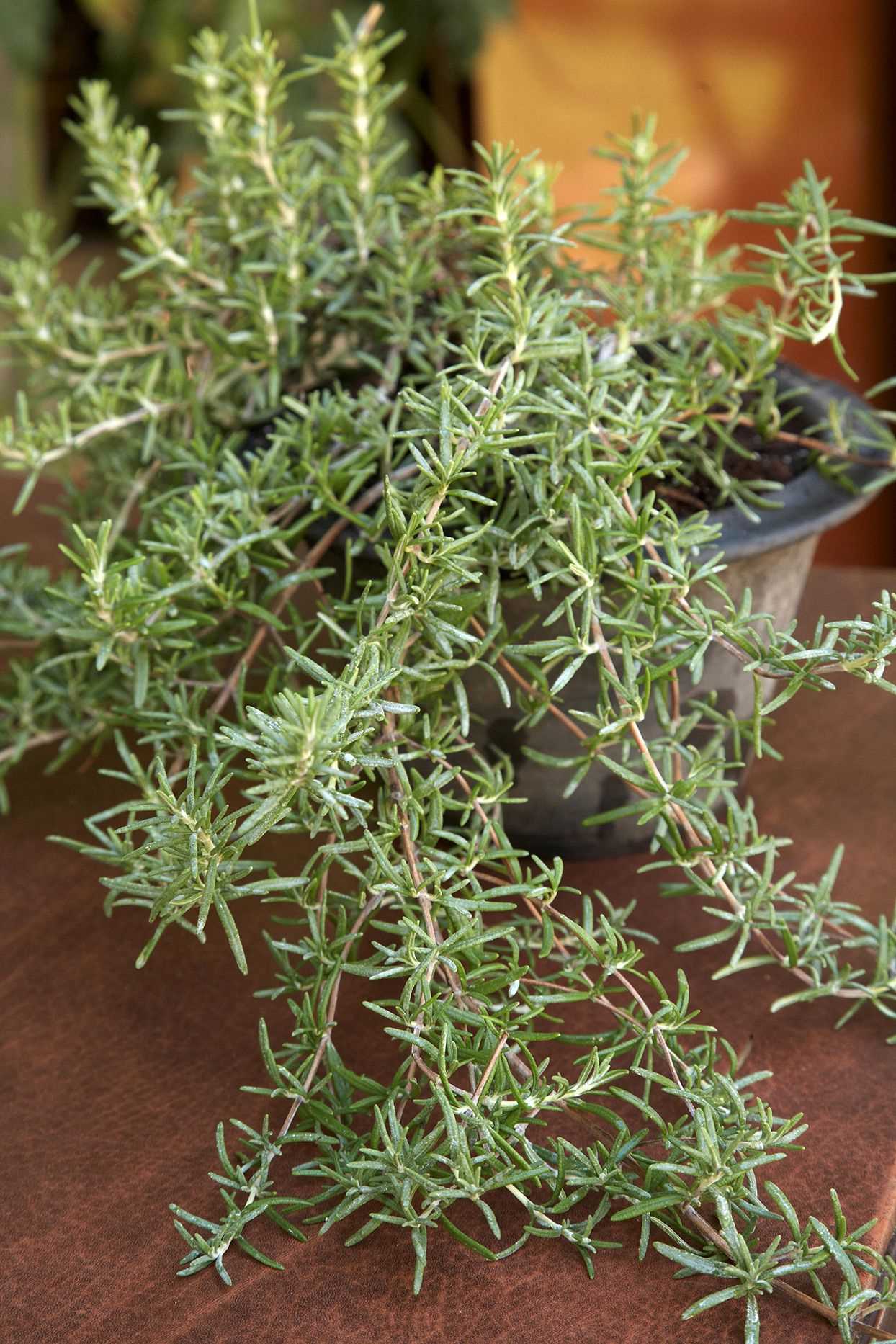
When growing rosemary indoors, it’s important to choose the right container. Opt for a pot that is at least 12 inches in diameter and has drainage holes to prevent waterlogging. Ensure that the pot is placed on a saucer or tray to catch any excess water.
Providing the ideal growing conditions
Rosemary thrives in bright, direct sunlight. Place your potted rosemary near a south-facing window where it can receive at least six hours of sunlight per day. If natural light is limited, you can supplement with fluorescent lights placed 6 to 12 inches above the plant.
Ensure that the indoor temperature is between 65 to 70°F (18 to 21°C) during the day and no lower than 55°F (13°C) at night. Rosemary prefers a well-ventilated area with good airflow, so avoid placing it near drafts or heat sources.
Watering and humidity

Rosemary prefers slightly dry conditions, so it’s important to avoid overwatering. Allow the top inch of soil to dry out before watering, and always ensure that excess water drains away. Aim to water your rosemary plant deeply once every 1-2 weeks, adjusting the frequency depending on the humidity level in your home.
To increase humidity around your rosemary, place a tray of water near the plant or use a humidifier. Misting the foliage occasionally can also help to provide some humidity.
Fertilizing
Rosemary doesn’t require heavy fertilization when grown indoors. Apply a balanced, slow-release organic fertilizer once in the spring, and then again in mid-summer. Alternatively, you can use a diluted liquid fertilizer every 4-6 weeks during the growing season.
Pruning and harvesting
Regular pruning will help to maintain the shape and size of your indoor rosemary plant. Pinch off the tips periodically to encourage bushier growth and prevent legginess. You can also harvest rosemary sprigs as needed for culinary use, which will further promote healthy growth.
Pest control
Indoor rosemary plants are generally less prone to pests, but you should still keep an eye out for common indoor pests such as spider mites or whiteflies. If you notice any signs of pest infestation, isolate the affected plant and treat it accordingly using organic pest control methods.
By following these care tips, you can enjoy the beauty and fragrance of rosemary indoors all year long. Whether you use it in your cooking or simply enjoy its aromatic presence, indoor rosemary can be a delightful addition to your home.
“Question-Answer”
What are some tips for growing rosemary?
Some tips for growing rosemary include choosing a sunny location, ensuring well-drained soil, watering it sparingly, and pruning it regularly to maintain its shape.
What are the different varieties of rosemary available?
There are several varieties of rosemary available, including ‘Arp’, ‘Barbecue’, ‘Gorizia’, ‘Tuscan Blue’, and ‘Prostratus’.
Can rosemary be grown in a vegetable garden?
Yes, rosemary can be grown in a vegetable garden. It can be a great addition to a vegetable garden as it attracts beneficial insects and can help repel pests.
How often should rosemary be watered?
Rosemary should be watered sparingly. It prefers dry conditions and can tolerate drought once established. Overwatering can lead to root rot and other issues.
How do you prune rosemary?
To prune rosemary, you can use pruning shears or scissors to trim back the branches. It is best to do this in early spring before new growth starts. Remove any dead or damaged branches, and shape the plant by cutting back the tips of the branches.
Can rosemary be grown indoors?
Yes, rosemary can be grown indoors. It requires bright sunlight and well-drained soil. You can grow it in a pot or container and place it near a sunny window.







